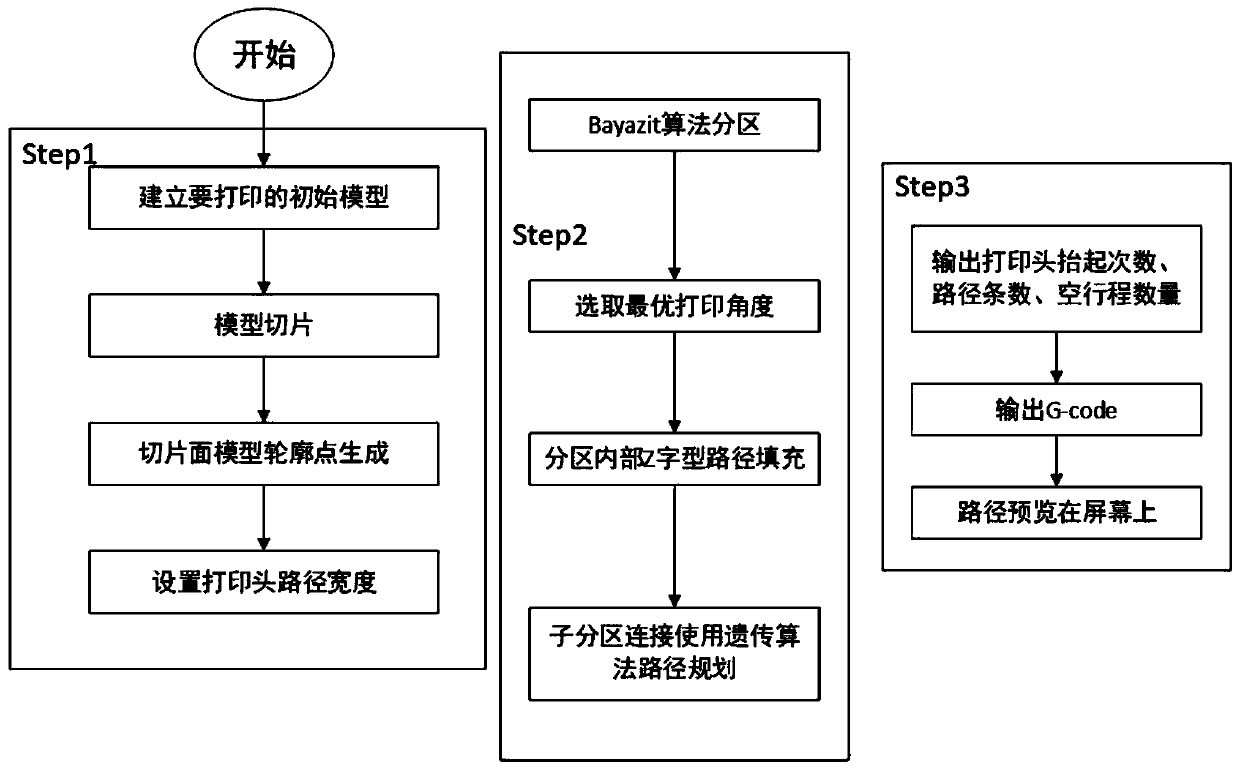Intelligent 3D printing path planning method based on genetic algorithm
A path planning and 3D printing technology, which is applied in the direction of genetic rules, digital output to printing unit, calculation, etc., can solve the problems of reducing the heat dissipation effect of materials, low printing efficiency of parts, and poor performance, so as to achieve versatility and improve printing efficiency effect
- Summary
- Abstract
- Description
- Claims
- Application Information
AI Technical Summary
Problems solved by technology
Method used
Image
Examples
Embodiment Construction
[0036] The specific implementation manners of the present invention will be further described below in conjunction with the accompanying drawings and technical solutions.
[0037] The flow chart of the present invention is as figure 1 shown. In the following, the present invention will be further described in detail for the actual printed object, and compared with the traditional algorithm.
[0038] Step1: Preparatory work, complete the slice of the model and the generation of sequential contour points
[0039] (1) To print the nut model, establish a 3D simulation model, and slice the 3D model (see figure 2 ), and then obtain each two-dimensional slice plane, and output its outline as a sequential point set and store it in an excel file. Since the object structure of each layer of model A is consistent, a certain layer is taken as an example below to describe the specific details of the present invention Implementation process.
[0040] (2) In the simulation environment, ...
PUM
 Login to View More
Login to View More Abstract
Description
Claims
Application Information
 Login to View More
Login to View More - Generate Ideas
- Intellectual Property
- Life Sciences
- Materials
- Tech Scout
- Unparalleled Data Quality
- Higher Quality Content
- 60% Fewer Hallucinations
Browse by: Latest US Patents, China's latest patents, Technical Efficacy Thesaurus, Application Domain, Technology Topic, Popular Technical Reports.
© 2025 PatSnap. All rights reserved.Legal|Privacy policy|Modern Slavery Act Transparency Statement|Sitemap|About US| Contact US: help@patsnap.com



